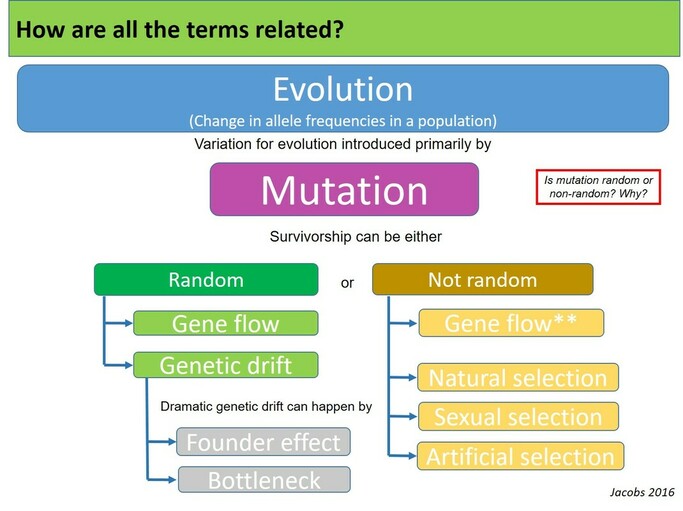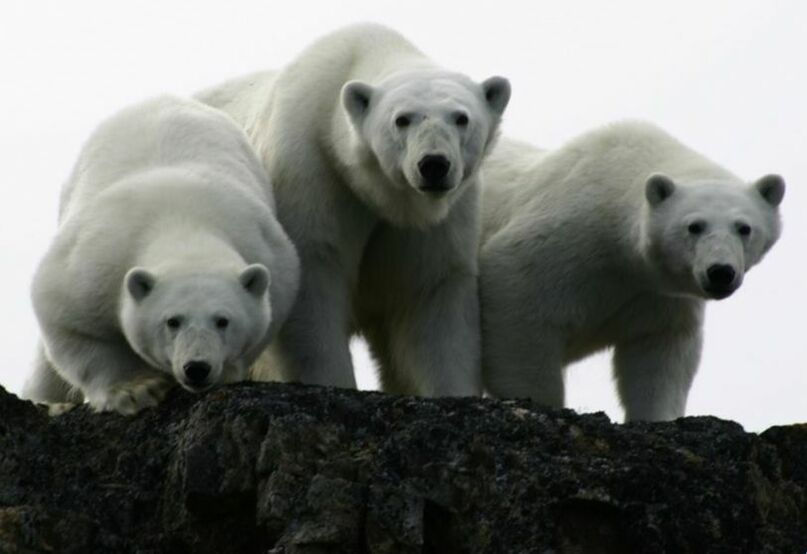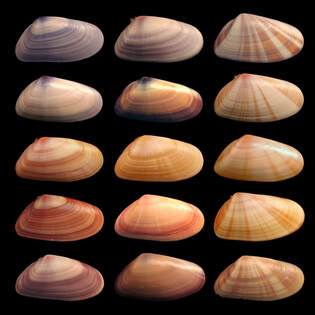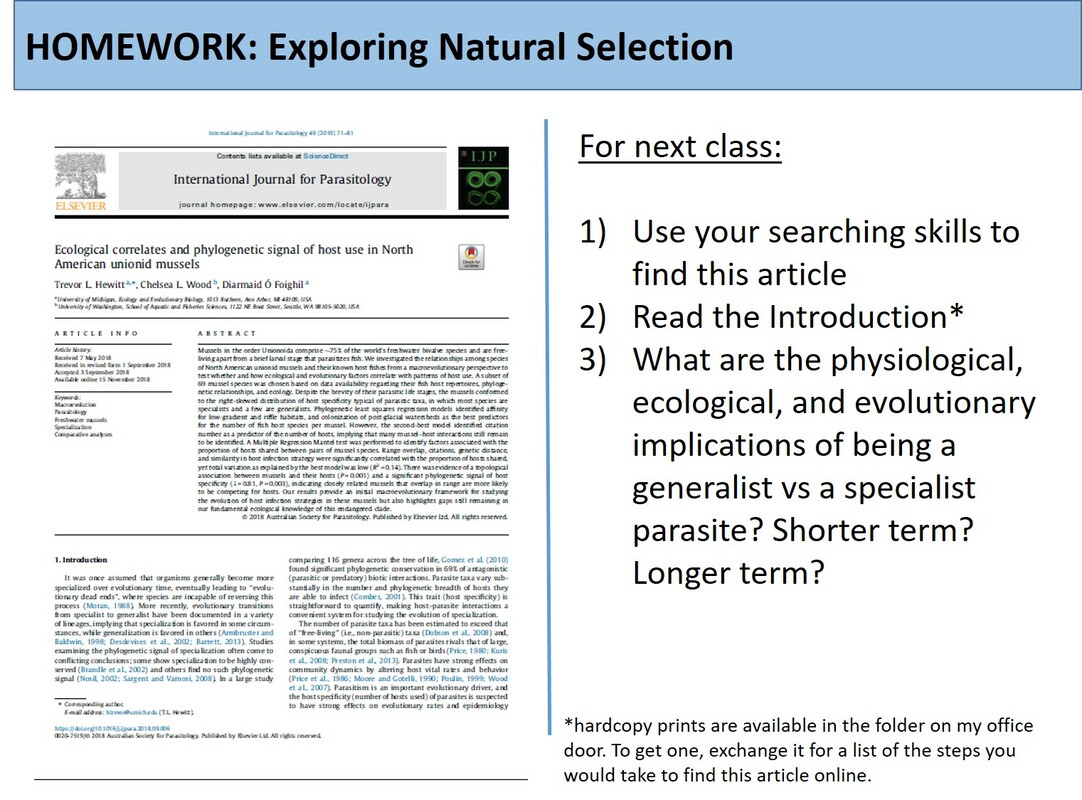Dear participants in my teaching demonstration scheduled for March 19th, 2019: Thank you for coming to this temporary website.
I have really enjoyed adopting a 'flipped' course approach to teaching where the face-to-face class time is reserved for assessment (formal and informal), feedback, and active learning. Below is a sample of what a student could be required to do in preparation for a class on the topic of Natural Selection. It is estimated that this preparation would take up to 1.5 hours and that 6 class hours would be needed to address the topic in a second year course in Evolution. This one presented as a demonstration would be the second of those classes.
This website page was built and completed before February 27, 2019.
Use the 'zoom' function on your web browser to change the orientation of the site such that the text becomes full page as you zoom in.
I have really enjoyed adopting a 'flipped' course approach to teaching where the face-to-face class time is reserved for assessment (formal and informal), feedback, and active learning. Below is a sample of what a student could be required to do in preparation for a class on the topic of Natural Selection. It is estimated that this preparation would take up to 1.5 hours and that 6 class hours would be needed to address the topic in a second year course in Evolution. This one presented as a demonstration would be the second of those classes.
This website page was built and completed before February 27, 2019.
Use the 'zoom' function on your web browser to change the orientation of the site such that the text becomes full page as you zoom in.
Evolution
Natural Selection
Review of key concepts from last week:
Evolution is an umbrella term that describes the change of allele frequencies within a population over time. The way in which those frequencies can change (a.k.a. the 'mechanisms') can vary. Over the past week we have looked at 'random' mechanisms of evolution. By 'random' we mean that survivorship is random with respect to the phenotype of the individuals who survive and who pass on their genetic material. These random mechanisms include gene flow (but see the exception!) and genetic drift.
We began building a concept map of these terms associated with evolution. Last week, we focused on the 'random' branch. This week and for the next couple of classes, we will focus on the 'not random' branch.
Evolution is an umbrella term that describes the change of allele frequencies within a population over time. The way in which those frequencies can change (a.k.a. the 'mechanisms') can vary. Over the past week we have looked at 'random' mechanisms of evolution. By 'random' we mean that survivorship is random with respect to the phenotype of the individuals who survive and who pass on their genetic material. These random mechanisms include gene flow (but see the exception!) and genetic drift.
We began building a concept map of these terms associated with evolution. Last week, we focused on the 'random' branch. This week and for the next couple of classes, we will focus on the 'not random' branch.
Natural selection is a process by which individuals from a population have higher survivorship for 'not random' reasons with respect to their phenotype that is linked directly with an aspect of the environment. Survivorship can vary in its expression; from death (and therefore complete removal from the breeding population) to the reduced reproductive output of an individual.
To study natural selection, we'll be considering several cases that will focus your attention at different levels of organisation and different time scales for you to appreciate the complexity of the mechanism.
1) The colour of the shells of marine turtle: this is a fictitious case study to consider the way in which predation can cause natural selection of one trait of the prey. Here we will isolate both a single trait and a selection pressure to ensure that we understand the mechanism fully.
2) The lures of freshwater mussels: You'll be asked to read about different freshwater mussel species that have either generalised lures or specialise lures. This is a case of diversity of adaptation across many species of mussels. Here we will appreciate the different selective (and non-selective) pressures that result in diversity as well as the costs and benefits of each.
To get us started though, let's consider the polar bear and its white fur.
To study natural selection, we'll be considering several cases that will focus your attention at different levels of organisation and different time scales for you to appreciate the complexity of the mechanism.
1) The colour of the shells of marine turtle: this is a fictitious case study to consider the way in which predation can cause natural selection of one trait of the prey. Here we will isolate both a single trait and a selection pressure to ensure that we understand the mechanism fully.
2) The lures of freshwater mussels: You'll be asked to read about different freshwater mussel species that have either generalised lures or specialise lures. This is a case of diversity of adaptation across many species of mussels. Here we will appreciate the different selective (and non-selective) pressures that result in diversity as well as the costs and benefits of each.
To get us started though, let's consider the polar bear and its white fur.
A mother polar bear and her two very healthy cubs. (photo: Jacobs, used with permission) Based upon the proportions of the features of the head and snout of the mother, can you guess the sex of the cubs?
Polar bears evolved from brown bears. Mitochondrial DNA evidence suggests that the modern polar bear is actually a hybrid of an extinct polar bear species and brown bears. If the phylogeny of extant bears was made using mitochondrial DNA alone, 'polar bears' would be nested within a clade of brown bear populations. Contemporary hybridization events of modern polar bears and brown bears yields a phenotypic intermediate of the two species with viable offspring. As we learn more about the evolution of polar bears, our understanding of their history changes. It is an exciting time to be a polar bear biologist!
Polar bears have many adaptations to living in the Arctic that brown bears do not. Polar bears are more streamlined, have smaller ears, a conical face and head, fur around the pads of their feet, more fat, differences in their use of dens, different diets, different means of hunting, to name a few. But it is their white fur that makes them most obviously different. The mutations that led to the trait of 'white fur' afforded bears an advantage in hunting in a snow and ice-covered environment. The white fur colour increases their ability to remain hidden from view of seals and other potential prey so long as they are hunting on a snow/ice covered background. The environment, or the context, is key.
Polar bears have many adaptations to living in the Arctic that brown bears do not. Polar bears are more streamlined, have smaller ears, a conical face and head, fur around the pads of their feet, more fat, differences in their use of dens, different diets, different means of hunting, to name a few. But it is their white fur that makes them most obviously different. The mutations that led to the trait of 'white fur' afforded bears an advantage in hunting in a snow and ice-covered environment. The white fur colour increases their ability to remain hidden from view of seals and other potential prey so long as they are hunting on a snow/ice covered background. The environment, or the context, is key.
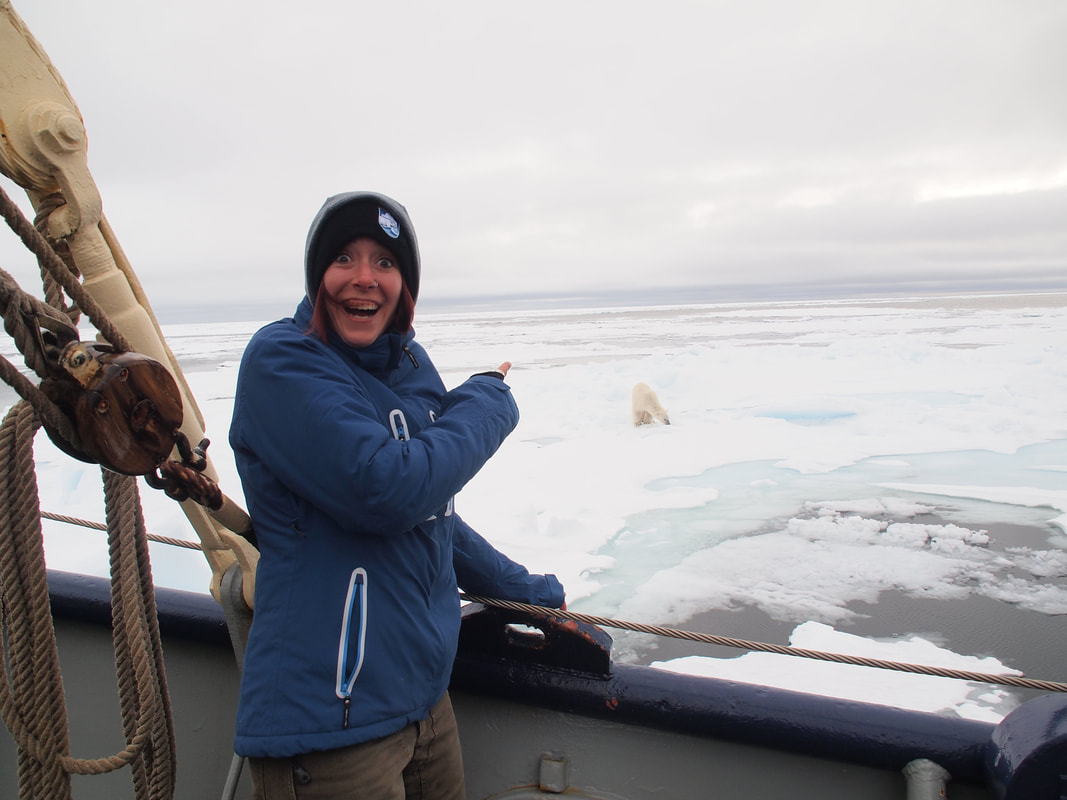
Look! A polar bear on the ice! Though polar bears are actually a more 'cream' colour they are very difficult to spot on the ice. Sometimes, all you can see is a black nose and two black eyes. (Photo: Jacobs, used with permission).
Imagine if a bear had white fur but lived in a temperate forest as it ambushed fast moving prey? Would it be able to sneak up on this prey? Likely not! In the context of a dark background of trees, bare soil, and rocks, a white bear would not have an advantage in hunting. But it isn't as simple as just evolving white fur. The adaptation of 'white fur' had to occur along with a few other changes to bear biology. It isn't likely that polar bears evolved white fur and then were selected to become active hunting carnivores. That's because 'white fur' would not have been an advantage without the context of being a carnivore. C.R. Harington (2008) of the Canadian Natural History Museum suggests that there may have been an intermediate bear that they call the "Arctic coastal bear". They imagine a dusky grey scavenger bear who fed on whale carcasses and other marine mammals washed ashore on grey dusky beaches. This bear, they suggest, may have been selected for white fur as it wandered out on the ice offshore in search of seals. Further research (maybe yours!) may reveal the story behind the evolution of white fur. But for now, Harington's mechanism works to explain how a dark brown omnivorous bear may have evolved by natural selection to a white carnivorous bear.
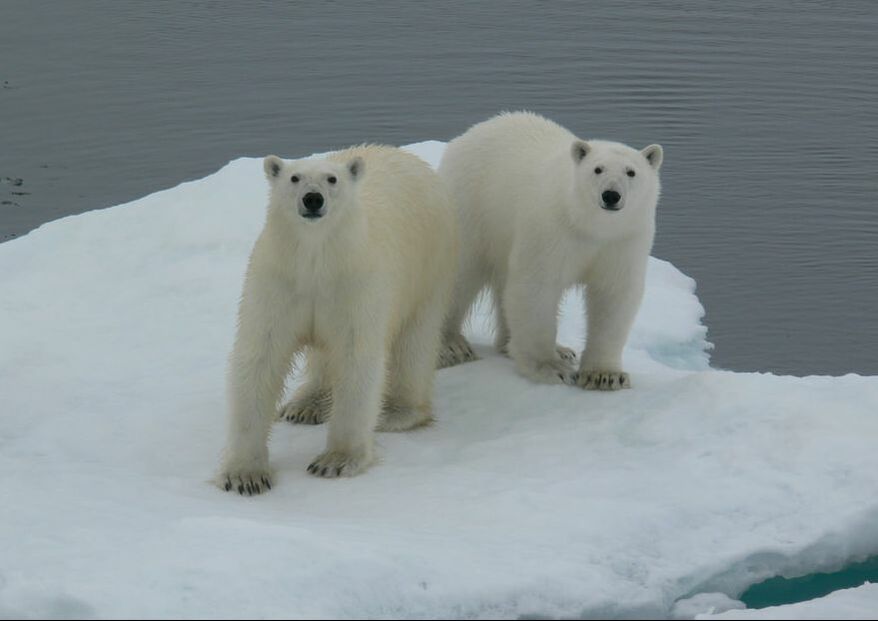
A mother and two year old cub on the ice. (Photo: Jacobs, used with permission)
Perhaps some of you are thinking about the white bears of the forest on the Pacific Coast of Canada. These bears, Ursus americanus kermodei, are a subspecies of the black bear. And, indeed, it has a really difficult time remaining hidden within the very dark backdrop of the forest. Thankfully, this species doesn't hunt fast moving terrestrial prey where their fur would make them more visible. Interestingly, research shows that individuals of this rare subspecies have greater success in fishing salmon from rivers because their white fur makes it harder for fish to see them from below the water's surface as they are swimming by. So why aren't there more of these white forest bears? Expression of the white trait requires homozygous recessive alleles so selection to fixation may take a very long time or may never happen. It depends!
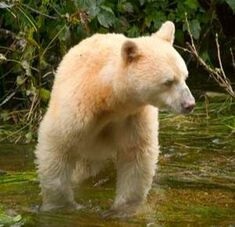
Photo of Ursus americanus kermodei used with wikimedia licensing https://upload.wikimedia.org/wikipedia/commons/2/2e/Spiritbear.jpg
There are several types of Natural Selection. They are distinguished from each other by the resulting distribution of the variation that exists within the trait. This is because the way in which the alleles are selected can vary.
1) Stabilizing selection: here the 'average' of the trait yields higher survivorship. Trait variation is therefore narrowed towards the centre of its original distribution.
2) Directional selection: here it is one extreme of the trait that yields higher survivorship and variation is narrowed towards either end of the distribution.
3) Disruptive selection: here it is both extremes of the trait that yield higher survivorship and the 'average' is removed from the population.
Can you think of examples of this? Can you think of scenarios where one type of selection is more likely to occur? What might you need to know about the context (environment) in order to predict what type of selection would likely occur?
1) Stabilizing selection: here the 'average' of the trait yields higher survivorship. Trait variation is therefore narrowed towards the centre of its original distribution.
2) Directional selection: here it is one extreme of the trait that yields higher survivorship and variation is narrowed towards either end of the distribution.
3) Disruptive selection: here it is both extremes of the trait that yield higher survivorship and the 'average' is removed from the population.
Can you think of examples of this? Can you think of scenarios where one type of selection is more likely to occur? What might you need to know about the context (environment) in order to predict what type of selection would likely occur?
